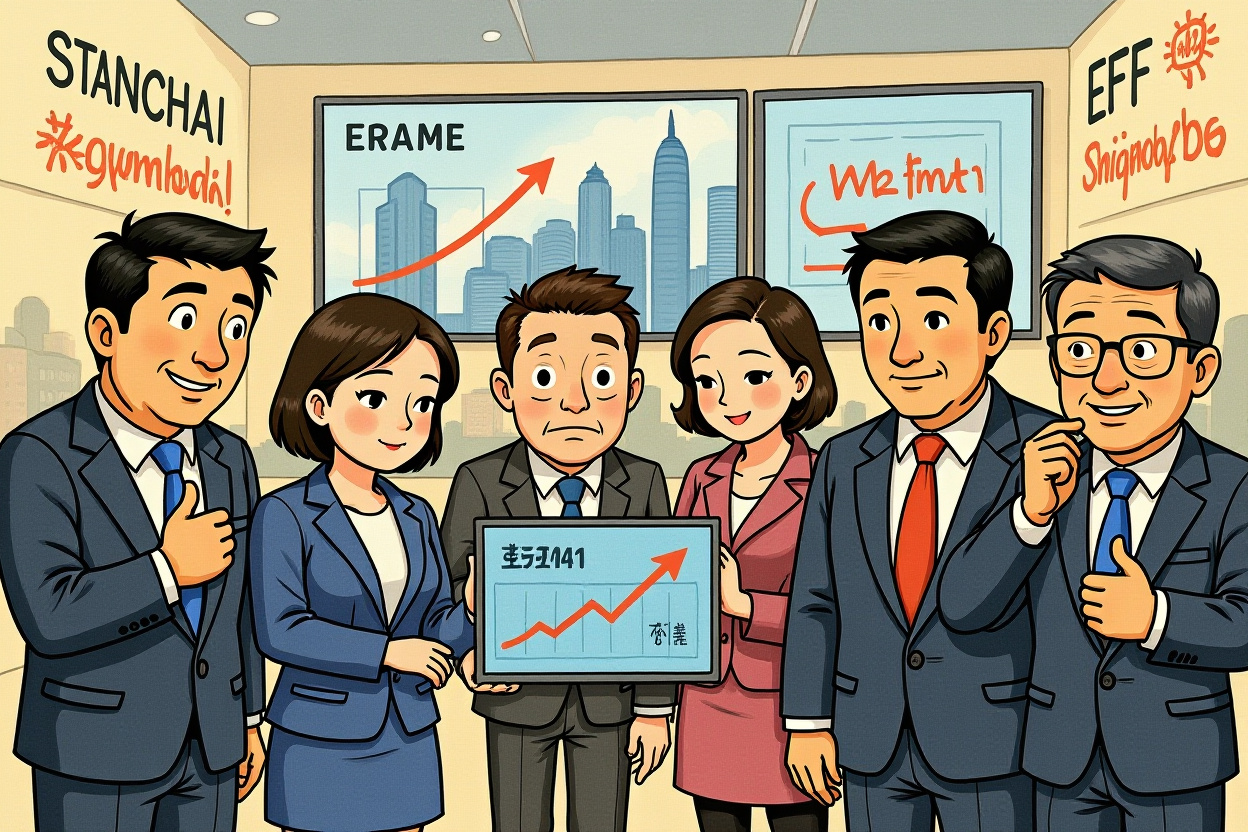In recent years, a profound shift has been taking place within China’s A-share market. The old adage of stock-picking as the primary path to wealth during bull markets is being challenged by a growing wave of investors turning to Exchange-Traded Funds (ETFs). This transformation isn’t just about preference—it’s about performance, accessibility, and changing market dynamics that make ETFs increasingly attractive compared to individual stock selection. The phrase ‘buying ETFs beats stock picking in a bull market’ has moved from investment circles into mainstream discourse, signaling a fundamental reshaping of how Chinese investors approach market opportunities. This article explores why this shift is happening, what it means for retail and institutional investors, and how the very rules of investing in Chinese equities are being rewritten.
The Rising Dominance of ETFs in Chinese Markets
The growth of ETFs in China has been nothing short of remarkable. From niche products a decade ago to mainstream investment vehicles today, ETFs have captured the imagination of both retail and institutional investors. Data from the Shanghai and Shenzhen stock exchanges shows ETF trading volumes hitting record highs during recent market rallies, often outpacing the growth of individual stock transactions.
Why Investors Are Flocking to ETFs
– Diversification benefits: ETFs allow investors to gain exposure to entire sectors or indices without the risk of individual stock selection
– Lower costs: Management fees for ETFs typically range from 0.1% to 0.5%, significantly below active management fees
– Transparency: Holdings are disclosed daily, unlike many active funds that report quarterly
– Trading flexibility: ETFs trade like stocks throughout the trading day, allowing for precise entry and exit points
The Limitations of Traditional Stock Picking
While stock picking has traditionally been celebrated as the path to superior returns, evidence suggests that consistently beating the market through individual stock selection is increasingly difficult. The complexity of China’s market, regulatory changes, and global economic interconnectedness have made successful stock picking a challenge for even professional fund managers.
The Data Doesn’t Lie
Multiple studies have shown that over 80% of active fund managers in China underperformed their benchmark indices over the past five years. This performance gap has widened during bull markets, where broad market participation through ETFs often captures gains more efficiently than selective stock portfolios. The concept that ‘buying ETFs beats stock picking in a bull market’ is supported by growing empirical evidence from market performance data.
Structural Changes Driving the ETF Revolution
Several structural factors are accelerating the shift toward ETFs in China’s A-share market. Regulatory support, market maturation, and technological advancements have created an environment where ETFs thrive.
Regulatory Environment Evolution
The China Securities Regulatory Commission (CSRC) has actively encouraged ETF development as part of broader market reform efforts. Streamlined approval processes, tax advantages, and educational initiatives have made ETFs more accessible to retail investors. These regulatory tailwinds have significantly contributed to the growing acceptance that buying ETFs beats stock picking in a bull market.
Technological Empowerment
Fintech platforms and mobile trading apps have democratized access to ETFs. Investors can now research, compare, and purchase ETFs with a few taps on their smartphones, eliminating previous barriers to entry. This technological revolution has been particularly impactful for younger investors who prefer simplified, transparent investment vehicles.
Case Studies: ETF Performance Versus Stock Picking
Examining specific market periods reveals compelling evidence supporting the ETF approach. During the 2020-2021 bull market, broad market ETFs tracking the CSI 300 index delivered returns of approximately 45%, while the average actively managed fund returned 32%. Even more telling, only 22% of individual investors outperformed the CSI 300 ETF during this period.
Sector-Specific Examples
The technology sector provides particularly instructive examples. While some individual tech stocks delivered spectacular returns, many others significantly underperformed. Investors who purchased a technology sector ETF captured the sector’s overall growth while avoiding the risk of picking individual winners and losers. This pattern repeats across multiple sectors, reinforcing the argument that buying ETFs beats stock picking in a bull market for most investors.
The Psychological Dimension: Why ETFs Win Minds and Money
Beyond the numbers, psychological factors play a crucial role in the ETF revolution. Behavioral economics helps explain why ETFs often deliver better results for the average investor.
Avoiding Behavioral Pitfalls
– Herding mentality: Individual investors often chase popular stocks at peak prices
– Overconfidence: The belief that one can pick winners leads to excessive trading and costs
– Loss aversion: Holding losing positions too long while selling winners too early
– Recency bias: Overweighting recent performance in investment decisions
ETFs help mitigate these behavioral errors by providing automatic diversification and reducing the temptation to make emotional trading decisions. This psychological advantage contributes significantly to why buying ETFs beats stock picking in a bull market for many investors.
The Future of Investing: How ETF Dominance Reshapes Markets
The growing preference for ETFs is creating feedback loops that further reinforce their advantage. As more capital flows into ETFs, these funds become larger and more liquid, improving their tracking accuracy and reducing costs. This creates a virtuous cycle that makes ETFs increasingly attractive compared to individual stock selection.
Market Structure Implications
The rise of ETFs is changing how markets function. Correlation between stocks within indices has increased, making genuine alpha generation through stock selection more challenging. Companies are increasingly focused on inclusion in major indices, recognizing that ETF flows can significantly impact their valuation. These structural changes make the argument that buying ETFs beats stock picking in a bull market increasingly compelling.
Practical Guidance for Modern Investors
For investors navigating today’s markets, understanding how to effectively use ETFs is becoming essential knowledge. The key is not abandoning stock picking entirely but recognizing where each approach fits within a broader investment strategy.
Building a Balanced Portfolio
– Use broad market ETFs as core holdings for market exposure
– Consider sector ETFs for targeted exposure without individual stock risk
– Use individual stocks for satellite positions where you have strong conviction
– Regularly rebalance to maintain target allocations
– Consider cost, liquidity, and tracking error when selecting ETFs
This balanced approach acknowledges that while buying ETFs beats stock picking in a bull market for broad market exposure, selective stock picking may still play a role in sophisticated investment strategies.
Embracing the New Reality of Market Investing
The transformation of China’s A-share market reflects broader global trends toward passive investing and ETF adoption. While stock picking will always have its place, particularly for professional investors with dedicated research resources, the evidence strongly supports ETFs as the superior approach for most investors during bull markets. The data, structural market changes, and psychological factors all point toward the same conclusion: buying ETFs beats stock picking in a bull market for the majority of market participants. As markets continue to evolve, investors who adapt to this new reality by incorporating ETFs into their strategies will likely achieve better outcomes with lower risk and less stress. The game hasn’t just changed—the rules have been rewritten, and smart investors are adjusting their playbooks accordingly.




